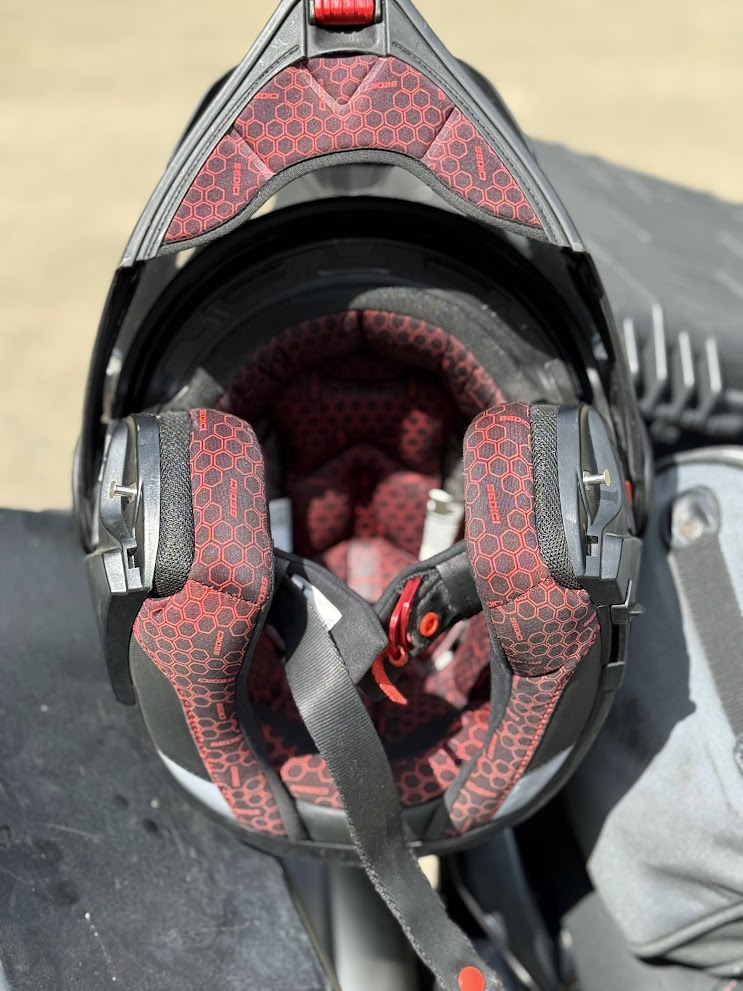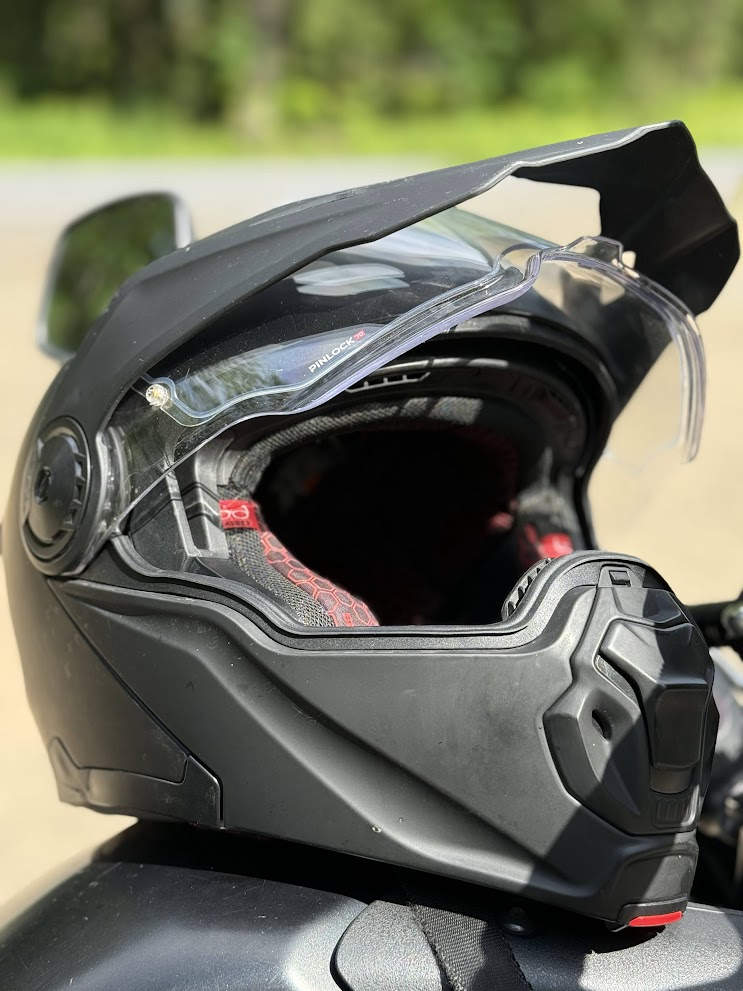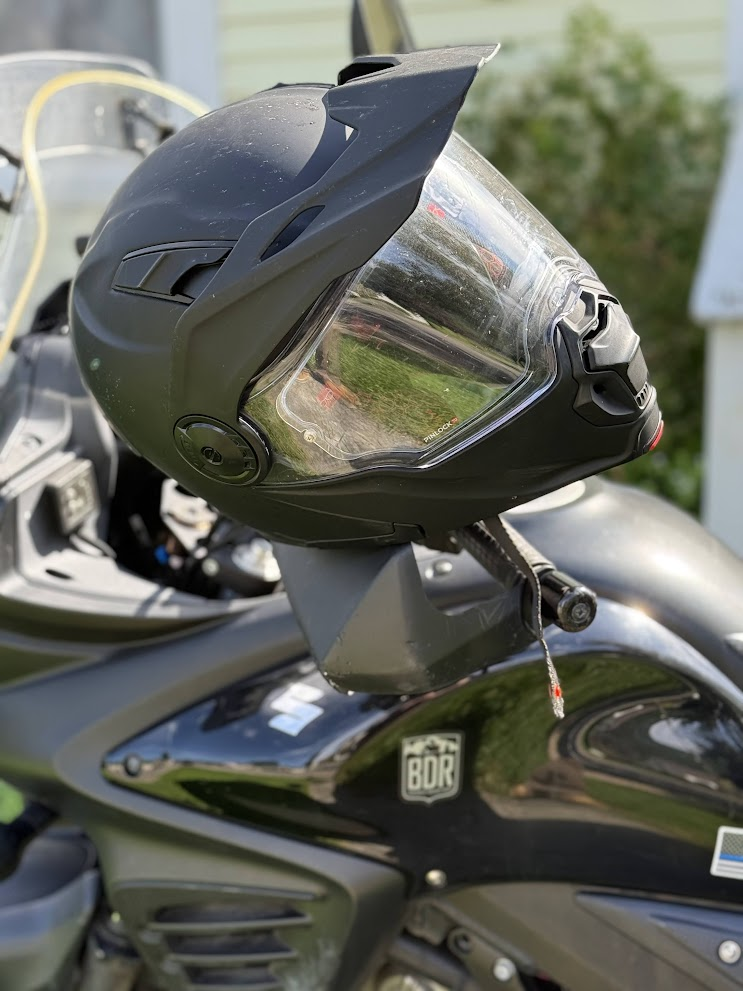The Intimidation Factor
There’s a moment most riders know: something’s not right with the bike, and your stomach sinks. Do you haul it to the shop? Do you search YouTube? Do you just hope it fixes itself? You feel like the end is near if you don't do something soon...but what to do?
I’ve been there. The first time I tried to adjust my chain tension, I wasn't even sure where to start. But once I got over the nerves and actually put wrench to bolt, something clicked—not just in the bike, but in me. I'm going to share what went through my head (and still goes through my head) every time I realize that something isn't right on the bike, and the thought process from "uh oh" to "wow, I did that??"
This isn’t a how-to. It’s a why-you-should. Because the rewards of learning to wrench on your own bike go far beyond saving a few bucks.
Why It’s Worth It
When you fix your own machine:
- You are no longer at the mercy of a shop's schedule or budget. Why wait even a week to schedule an oil change, brake replacement, chain tightening or replacement, etc. when you can do it in a few short hours yourself? Fix it and ride!
- You will be hard-pressed to find a repair shop a hundred miles from nowhere. If things go sideways in the middle of one of your journeys, you'll have to fix it and ride. More than once I have had my bike up on the center stand in the middle of a mall parking lot.
- There is a quiet confidence that comes from turning the bolts yourself. From understanding the rhythm of your engine. From knowing exactly why squeezing that lever makes the bike stop. From knowing that if something goes wrong, you have options.
The truth is, the more you understand your bike, the better rider you become. You start to hear things differently. Feel things differently. You ride smarter, because you ride with your machine -- not just on it.
The parallels between facing the challenges of a bike that needs your attention and facing the challenges of a life that needs your attention could be the subject of an entire post or ten. The way you approach a motorcycle repair or maintenance -- maybe an overwhelming feeling, maybe denial, maybe anger -- is just the way you might approach a part of your life that is in need of repair. And just like a bike repair, you study the manual, you ask others for help, you come up with a plan, you set aside the time, and you roll up your sleeves and get your hands dirty. And you succeed.
You Already Have What It Takes
Riders tend to be a gritty bunch. We already have what mechanics call “mechanical sympathy”—the ability to sense what’s wrong by feel or sound. With a little patience, a decent manual, and the willingness to screw up now and then, you’ll get there. You don’t need to be a certified mechanic. You just need to be someone who’s willing to try. This is about becoming more self-reliant. More aware. More in tune with the ride.
This is the most important idea that I want to impress upon you. You, you, reader, can fix your motorcycle.
My Own Story
I am not a mechanic. At all. I am the quintessential computer nerd. I work in Information Technology. Honestly, I never owned a socket set until I was 50+ years old. I could technically explain how an internal combustion engine works, but changing the oil in my truck was a challenge.
I started with a used Suzuki DL650. Once I actually discovered adventure bike riding, I put something like 10,000 miles on that bike the first year I owned it. Of course it needed regular maintenance, and of course the odd thing or two would go wrong with it. I went through brakes, oil, chains, tires etc. like crazy.
I live in a small town, and it's difficult to find a reputable bike mechanic who isn't so overwhelmed that you can't get your bike in for weeks or even months. There was just no way I was going to wait that long to ride. Necessity being the mother of invention, and in the true nature of a solo adventure biker, I invested in some basic tools, and set to work learning to do it myself.
The small projects gave me a huge confidence boost, and a real sense of connection to the bike when I was on it. I fixed a few flat tires on the side of the trail, felt my own work in action every time I squeezed the brake, and felt the extra "zip" of a freshly tensioned chain. When the time came for new tires, I bought myself a basic set of tire spoons and set to work.
Eventually, as the miles ticked off on the bike, the maintenance and repairs became a bit more involved. I kept at it, and my skills (and array of tools) has managed to keep up. I can happily say that other than the routine DMV inspection, my bike has never been in a shop for maintenance or repair.
So, I guess I am a mechanic. Go figure.
Start Small, Learn Fast
You don’t have to dive in with a valve adjustment or a carb rebuild. Start with something simple. Each of these tasks teaches you a little more about your bike—and about yourself. And each small win builds momentum. Before you know it, you’ll be diagnosing strange rattles, patching things trailside, and maybe even helping someone else get back on the road.
- Check your tire pressure. One of the most neglected actual safety issues you can face. Do this before every ride.
- Change your oil. Do this regularly. This is a 30 minute job once you've done it a few times.
- Oil your chain. This is often neglected. With a street bike on clean roads, you might get away with that. With an adventure bike, not so much. Oil your chain every other tank of gas, and clean it at least every 1,000 miles, depending on how you ride.
- Check/adjust your chain tension. You should check this every time you clean your chain, and adjust it if necessary.
- Patch a tire. We'll do a whole post on this. One of the handiest things you'll learn, trust me.
Build Your Setup
You don’t need a fancy garage. Lots of bikes have been worked on with a tarp, a milk crate, and a wrench or socket set. Start with the basics:
- A good set of hex keys, both metric and conventional. You'll need these more than you might think.
- A torque wrench. Sure, you can try to get away with "pretty tight" and "really tight," but it's really not smart -- especially with things like chain tension, brake clipers, etc. If you are an adventure biker, your bike is going to take a bit of punishment and jarring, and the middle of a dirt road is the last place you want to realize that you didn't tighten your front brakes properly.
- A socket set and a set of wrenches. They don't need to be the best of the best (and you can always upgrade later once you realize how amazing you feel working on your own bike).
- A few pair of pliers (conventional, needle-nose, maybe vice grips).
- A manual for your bike. A manual for your bike. A manual for your bike. Trust me.
As your skills grow, your toolkit can grow with you. Build the kind of setup that fits your riding needs—whether that’s a full workshop or just a compact roll to stash in your panniers.
(Pro tip: I’ll be sharing a gear and a tool list in an upcoming post if you want help getting started.)
Mistakes Are Part of It
You’re going to mess up. Drop a bolt into the skid plate. Strip a screw. Forget to reconnect something. That’s okay. The best mechanics we all know have war stories and scraped knuckles to prove it. You’ll laugh about it later. Or you’ll learn something critical. Or both. I have made quite a few mistakes of my own. Don't worry, the bike will let you know. And you'll remember.
Final Thoughts: Wrenches and Willpower
Fixing your own bike isn’t just about saving time or money—it’s about becoming the kind of person who doesn’t panic when things go wrong. The kind of rider who packs a toolkit with pride. The kind of friend others are glad to have on the trail.
Everyone starts somewhere. So start small. Be curious. Be patient with yourself. Ask for help when you need it. And most of all—keep going. You’ll be amazed how far a little willpower (and the right wrench) can take you.














